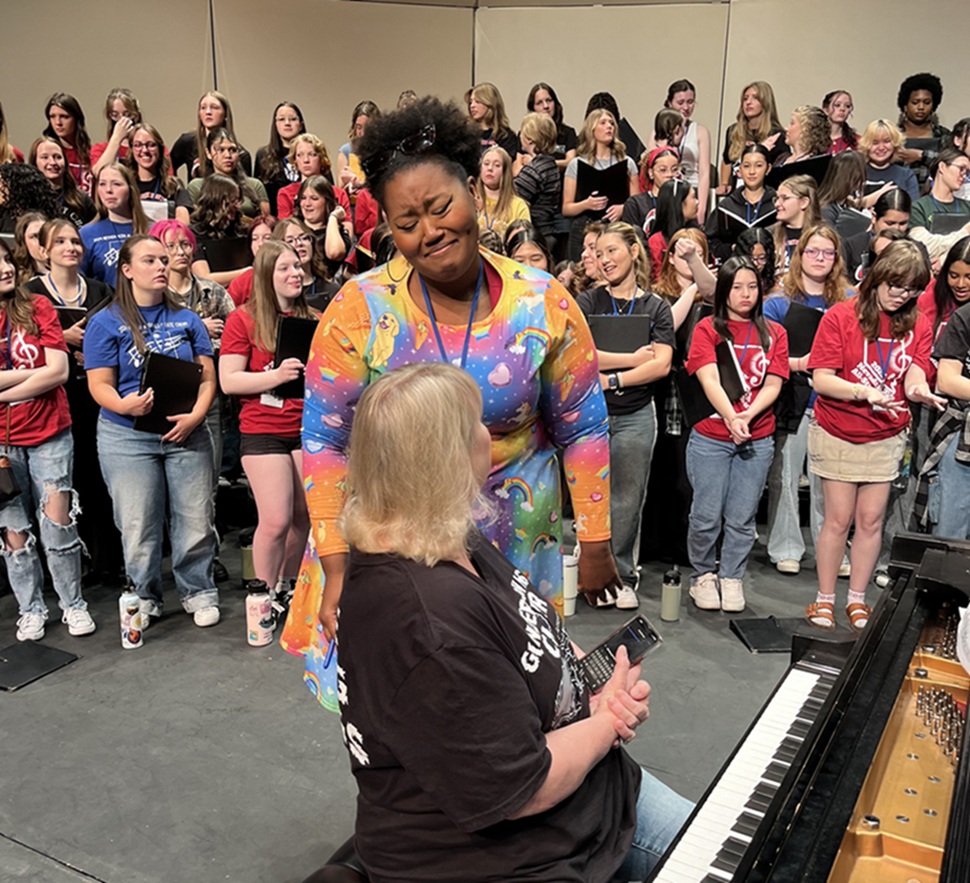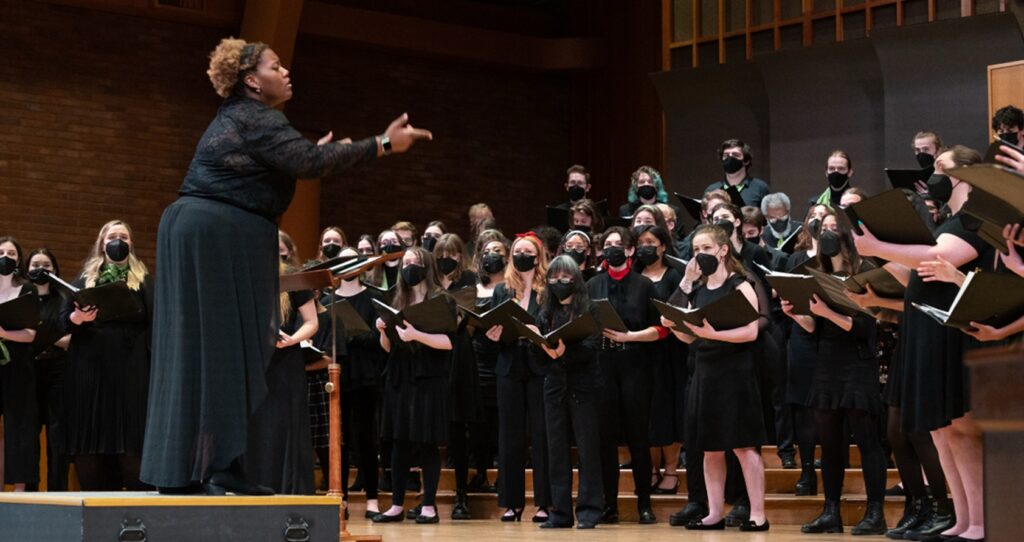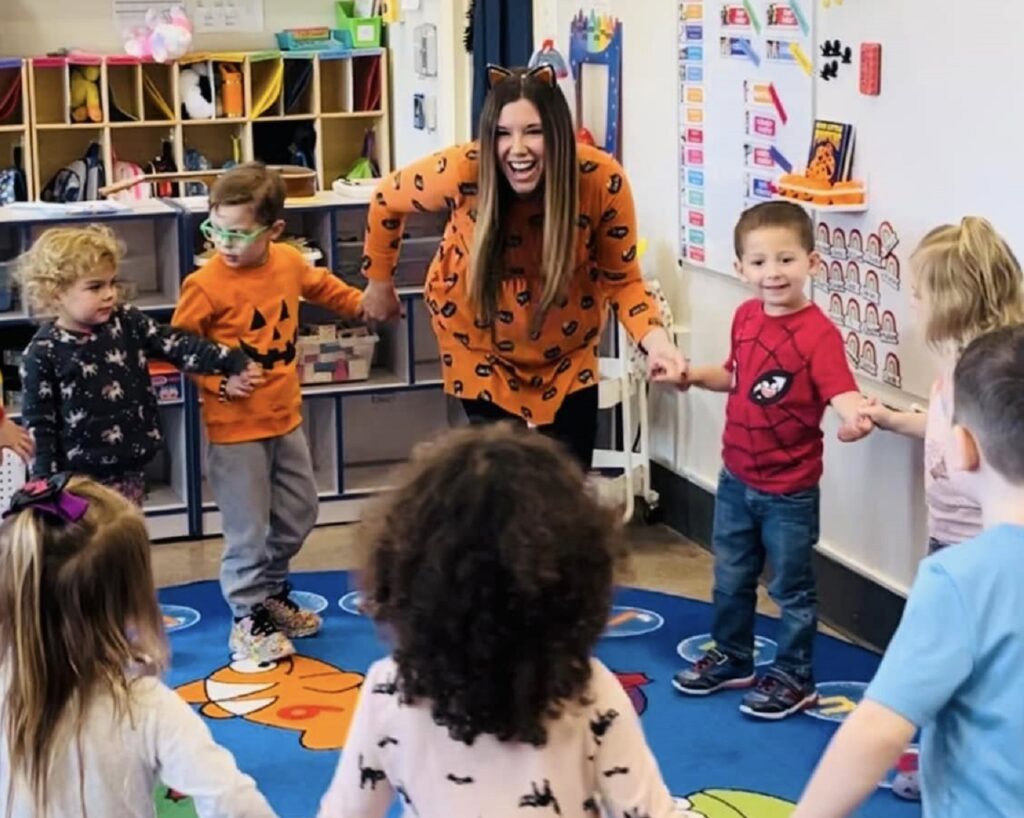Tagged Under:
Case Study: Tips to Home Grow a High-Quality Music Program
Most students at Dwight D. Eisenhower High School begin learning their instruments in high school, which makes the music program’s growth and success amazing!
Every day, I feel blessed to go to work, excited to make music with my students. These kids are some of the most humble, diligent and talented young people from some of the most selfless and genuine families I have ever met. There is no group of students I would rather teach or no community in which I would rather serve … but my job is sometimes far from perfect.
Having taught for the last 13 years in a Title I school with next to no feeder system and where the vast majority of the student population is low income, we lack many resources that exist in schools in more affluent communities. Despite some of these obstacles, we have built a thriving instrumental music department. When I began teaching at Dwight D. Eisenhower High School in 2009, I inherited a band program of just over 40 students. Today, that program has turned into three curricular bands, two curricular orchestras, several extracurricular ensembles and a guitar program, now serving more than 300 students.
One aspect of our growth that makes me particularly proud is that most students in our music program begin learning their instrument once they enroll in high school. Some students enter with previous musical experience from their elementary general music classes, but most begin their musical training with me. While I do not claim to be an expert on anything, I wanted to a share a few tips that I have found to be most successful throughout my experiences in home growing a high-quality music program.
Tip #1: Kids Won’t Invest in Learning Music Until They Invest in You
 You cannot be a wallflower music teacher and expect kids to flock to your class. Be bubbly and personable. Show kids that you are committed to them and that you see and hear them. Make them laugh. Truth be told, I gauge my effectiveness each day based on whether I can get my students to laugh.
You cannot be a wallflower music teacher and expect kids to flock to your class. Be bubbly and personable. Show kids that you are committed to them and that you see and hear them. Make them laugh. Truth be told, I gauge my effectiveness each day based on whether I can get my students to laugh.
One thing I learned from teaching in a post-pandemic landscape is that compassion must come before curriculum. When building a program of first-time instrumentalists, it is imperative that students associate music with positivity. Anyone who has taught beginners knows all too well that some of the sounds kids produce on their instruments are, shall we say — interesting. Embrace it. There will be time for remediation. After all, the more interesting the sound, the higher the potential for observable growth.
Tip #2: Do Instrument Demonstrations Justice!
Imagine you are at a car dealership. You know you want to drive something new off the lot, but you have no idea where to begin. You see sport cars and luxury sedans with the latest upgrades and accessories. A salesperson approaches you and in a confident tone says, “Let’s go for a drive.” He grabs the keys, tells you to hop in and as the car pulls out of the lot, the transmission lets out a deafening grind. The car bumps and jostles. It revs and slows. At this point, you are trying not to get sick! Sure, the car could be a lemon. More than likely, though, the salesperson doesn’t know how to drive a stick shift.
When it comes to attracting beginner instrumentalists, a quality demonstration of proper technique, beautiful tone quality and recognizable melodies on each instrument will significantly help students visualize their potential for success. As a gigging percussionist, I feel extremely confident performing a four-mallet marimba or drum set solo for my students. I might even throw in some stick tricks! However, ask me to demonstrate that same level of proficiency and confidence on a flute solo, and I would instantly become that car salesman who couldn’t drive a stick shift.
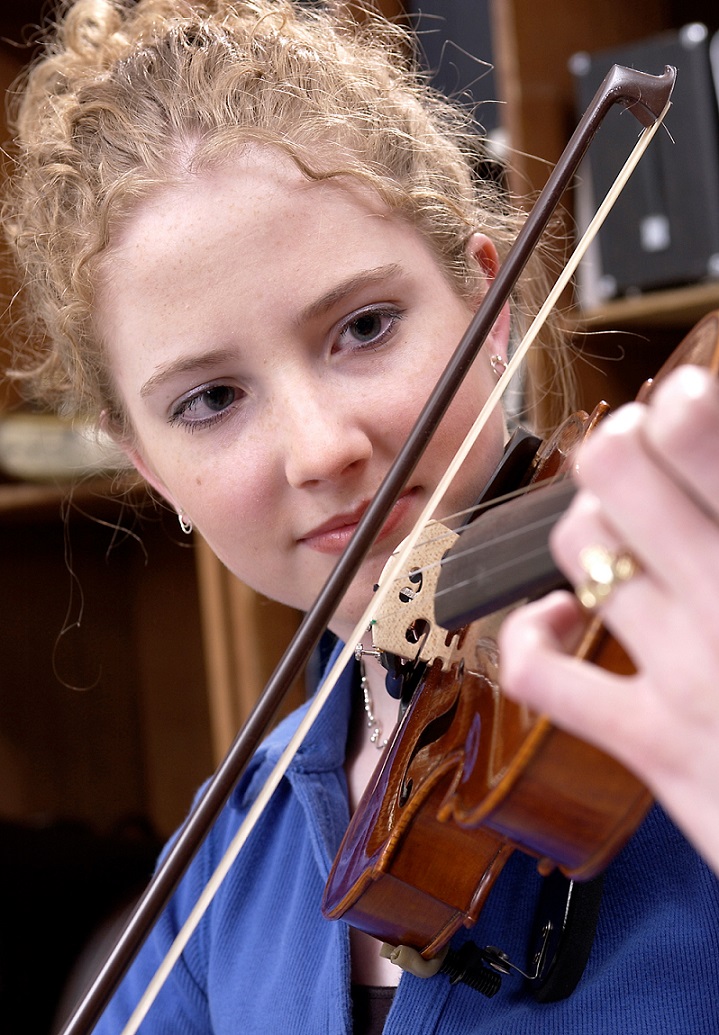 While I recognize there is enormous value in practicing instruments outside your primary instrument, as an ensemble director, I simply do not have the time to devote to preparing quality demonstrations on a variety of instruments. Instead, I call upon my colleagues, music major friends from college or, in some cases, former or current students to showcase their talents on various instruments.
While I recognize there is enormous value in practicing instruments outside your primary instrument, as an ensemble director, I simply do not have the time to devote to preparing quality demonstrations on a variety of instruments. Instead, I call upon my colleagues, music major friends from college or, in some cases, former or current students to showcase their talents on various instruments.
If your school does not have a budget to pay for these individuals, try not to worry. Throughout the years, I have paid for countless demonstrations with pizza and beer or have exchanged services where I demonstrate percussion for my colleagues’ groups free of charge. At the end of the day, your kids will get inspired to pick up an instrument that speaks to them by hearing quality live music all while you get to hang out with your friends!
If you work in a small town or rural area, or do not have access to musician friends or colleagues from other schools, community colleges, area universities or the United States Army Field Band feature some outstanding videos of their musicians demonstrating various band instruments on YouTube.
The Berlin Philharmonic’s Digital Concert Hall is my favorite resource for all things orchestra. While they charge an annual subscription fee, you can register for a free trial in the days leading up to your instrument demonstration that gives viewers access to a robust library of content including solo demonstrations and biographies, high-resolution multi-cam angles of decades’ worth of performances under the world’s most iconic conductors, and concert livestreams.
Tip #3: Start Playing Chamber Music as Soon as Possible.
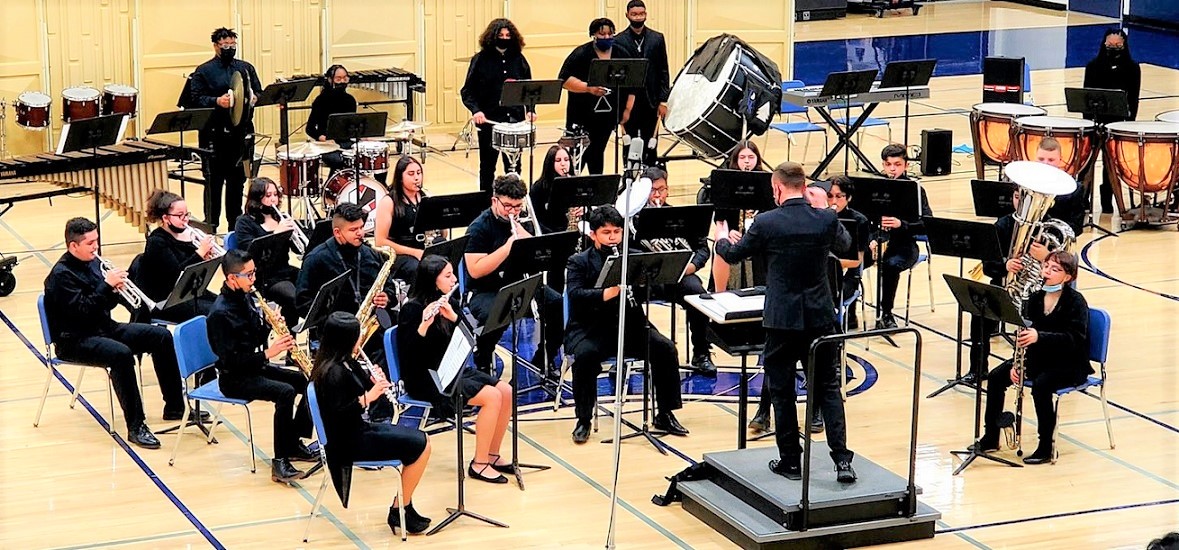 Unison playing in an ensemble is necessary when students first begin learning a musical instrument. Because novice students’ audiation and tone production are developing, it helps to have everyone play the same melody together for reference. Additionally, playing in unison helps alleviate some of the anxiety students might experience from playing something incorrectly or thinking they sound bad. After all, how many of us sing more quietly in the car once the radio is turned down?
Unison playing in an ensemble is necessary when students first begin learning a musical instrument. Because novice students’ audiation and tone production are developing, it helps to have everyone play the same melody together for reference. Additionally, playing in unison helps alleviate some of the anxiety students might experience from playing something incorrectly or thinking they sound bad. After all, how many of us sing more quietly in the car once the radio is turned down?
However, too much reliance on unison playing does little to enhance independent musicianship. Students can fall through the cracks rather inconspicuously and mislead you into thinking they understand the concepts because they can demonstrate the skills. Unfortunately, the two are mutually exclusive and both need to be assessed regularly for true learning to take place — especially with beginners at the high school level.
Chamber music takes the necessary elements of a fully orchestrated composition and distills them into individual parts. Each part, whether it is part of a duet, trio or larger chamber ensemble, is required to produce an authentic realization of the composer’s intent. Performing chamber music has myriad benefits for beginners:
- It teaches students about balance and blend immediately.
- It places responsibility on members to learn their individual part.
- It helps teachers assess whether students understand musical concepts and can demonstrate the necessary skills since everyone’s part is different.
- It diversifies programming and adds breadth to each concert.
- Best of all, it helps students enter more advanced ensembles with a greater sense of confidence and musical awareness.
Remember, no one is expecting your beginning group to read Mozart’s “Gran Partita.” Performing easy flex arrangements or even creating your own eight-bar duets or trios based on where your students are in their method books will do the trick. I assist my students with writing their own chamber pieces all the time. Remember, the first five pitches of a scale contain enough substance to imply tonic, subdominant and dominant harmony. My advice: If your kids can play through a fifth exhibiting good fundamentals, they can (and should) play chamber music.
Tip #4: Set Everyone Up for Success.
 If you are tasked with developing beginner instrumentalists to eventually feed your top ensemble(s), promote students based on their demonstration of mastery, NOT on the instrument they play. As someone who spends the majority of his day teaching band classes, I know this can be a tough pill to swallow. Remember though, our role as music educators is NOT to teach a piece of music, but to teach musical concepts and skills. The pieces we program are simply vehicles to determine the extent to which students understand and can demonstrate these musical concepts and skills. This is why your learning objectives and success criteria based on the standards found in your curriculum are so important!
If you are tasked with developing beginner instrumentalists to eventually feed your top ensemble(s), promote students based on their demonstration of mastery, NOT on the instrument they play. As someone who spends the majority of his day teaching band classes, I know this can be a tough pill to swallow. Remember though, our role as music educators is NOT to teach a piece of music, but to teach musical concepts and skills. The pieces we program are simply vehicles to determine the extent to which students understand and can demonstrate these musical concepts and skills. This is why your learning objectives and success criteria based on the standards found in your curriculum are so important!
Over my last 14 years of teaching, there have been years when my top ensemble did not have a tuba player. Just this past year, over a quarter of my top band consisted of alto saxophone players. I have had some years when my top ensemble had 60 members, and some years where I had 20. Yet in each of these examples, my groups still performed nationally, still earned Division I ratings at festivals, still received praise and exceptional feedback from clinicians, and still demonstrated an exceptionally high level of musicianship in performance at community concerts, parades and fundraisers.
Did I have to get creative with my programming? Sure. Did I have to rewrite parts and cross-cue lines of music to fit my ensemble? Absolutely. But at the end of the day, I rest easy knowing a successful performance is on the horizon because every kid can hang. When you use standardized criteria to form your ensembles, you set your students up for an experience tailored to both their strengths and their learning needs.
Tip #5: Celebrate the Little Victories … and Often!
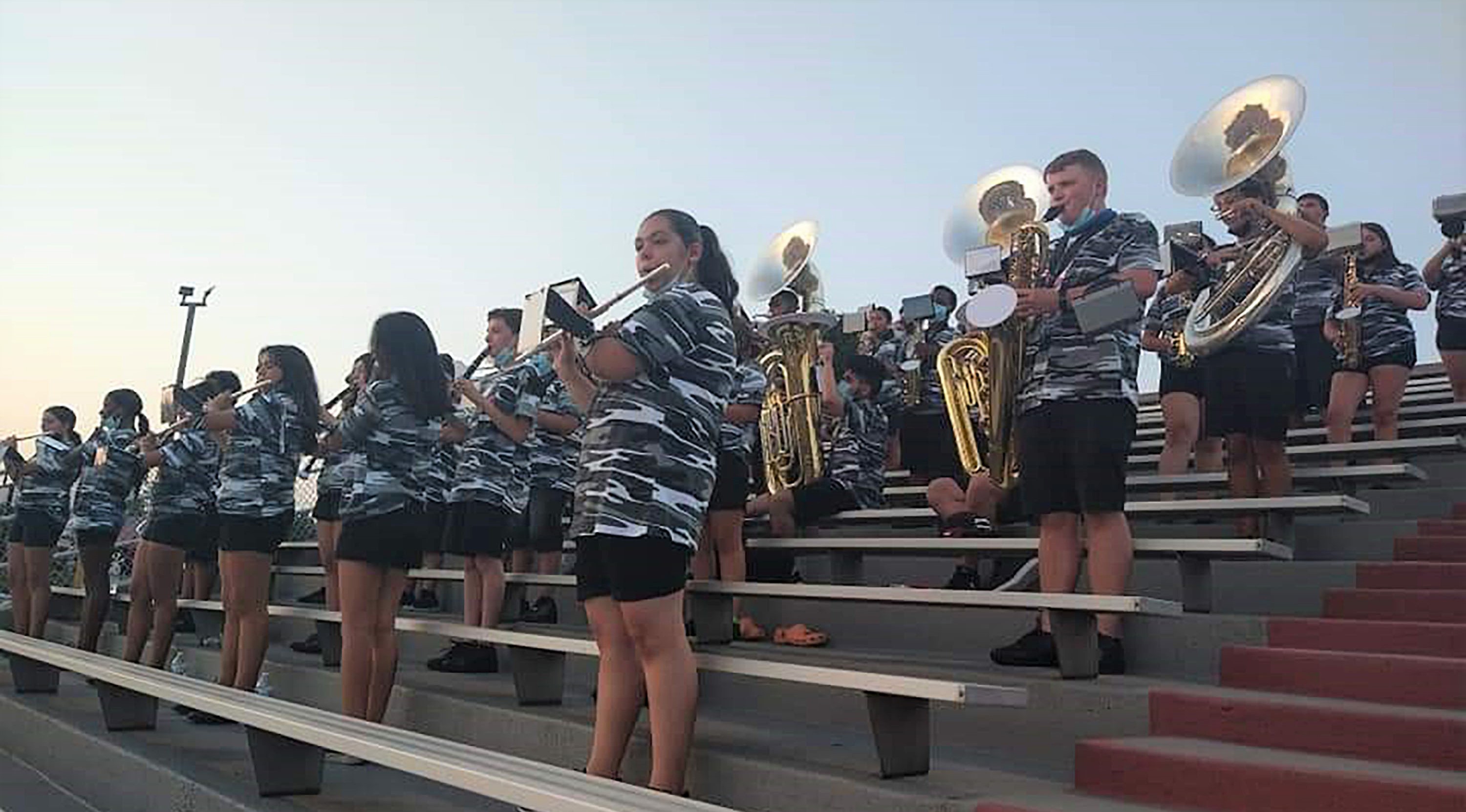 Most ensemble directors have a social media account for their music programs. This is a terrific way to share your students’ accolades with the world. That said, don’t devote the bulk of your social media posts to celebrating only the achievements of your top ensemble(s). Earning a superior rating at a festival is great news worth celebrating — but so is the first time your beginning brass students learn how to buzz! When every student feels celebrated in your program, word travels fast.
Most ensemble directors have a social media account for their music programs. This is a terrific way to share your students’ accolades with the world. That said, don’t devote the bulk of your social media posts to celebrating only the achievements of your top ensemble(s). Earning a superior rating at a festival is great news worth celebrating — but so is the first time your beginning brass students learn how to buzz! When every student feels celebrated in your program, word travels fast.
Sharing what your kids are doing in class is a great way to create some buzz about your program. Something simple like a class photo with the caption, “Look who learned how to slur today in orchestra!” communicates to parents and other stakeholders that their kids are learning valuable content in a curricular setting.
All great teachers realize that every single student can make an impact, but the most outstanding educators are the ones who help their students demonstrate that impact. Every student, whether they are introverted or extroverted, analytical or artistic, brings an asset to your program. The journey is helping students discover what that asset might be and then using it to benefit everyone in the room.
If you know that a particular student excels in a certain facet of performance, empower that student to help run a sectional that day. If a student has a magnetic personality, empower that student to help you recruit for your program. Approach each student with an asset-based mindset and celebrate them frequently. The more you cultivate their abilities, the fewer liabilities you will encounter.










